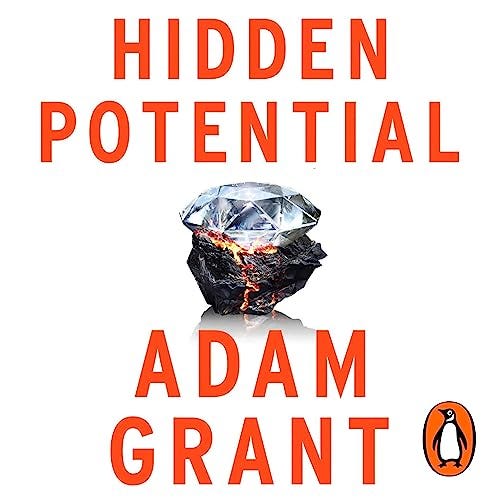Using a Guidebook: Hidden Potential
Summary of an influential book related to mentoring that has guided me
Potential is not a matter of where you start, but how far you travel
Adam Grant’s Hidden Potential is brimming with compelling stories and transformative ideas. It’s about developing character skills to reach your goals, seeking out others for support along the way, and ideas for transforming our systems to bring out the best in everyone.
I’ll be highlighting the sections most relevant to gathering information from others to support your own growth: focusing on building your capacity to absorb and adapt, using scaffolding to overcome obstacles, and elevating our own confidence by coaching others.
There are so many other lessons offered in this book and I hope you read it fully.
Humans are Sponges
There is endless information available these days, but not all of it is high quality or useful. Part of learning is knowing how to identify, integrate and use new information. The more proactive you are about finding the information you need to grow, the easier it is for you to be coached or taught because you’re primed to absorb. That said, learning is uncomfortable and not easy. Improvement and growth requires letting go of what you’ve done before and jumping head first into mistake territory.
Asking for feedback can be helpful to an extent, but feedback is past focused, dwelling on what you’ve already done. Asking instead for advice focuses on future improvement and often results in more suggestions and constructive ideas. Not everyone is a coach, but asking others “what can I do better?” sets people up to coach you by giving a framework for their responses.
Not all advice or feedback givers are created equal. Trusted sources should care about you and be familiar with your situation, and have credibility in the field or topic. A coach should see your potential and guide you to that better version of yourself. It can be hard to receive honest truths, but that clarity is actually a sign of caring. It can be especially hard for those with perfectionist tendencies to accept imperfection and not get caught up in expectations. Absorb the mistakes, keep growing, but know that flaws are part of the process.
It’s up to you to seek out the knowledge necessary for growth, but you don’t have to gain that knowledge alone.
Growth Requires Scaffolding
Scaffolding is a temporary frame that supports growth until a structure is able to stand independently. Like a building, you need scaffolding support to reach your potential. This support is needed at a pivotal intersection in your life and is used temporarily to overcome an obstacle. Scaffolding comes from others who can offer support and space to figure out what you’re doing.
Growth isn’t always linear, it can involve reversing and trying new roads. It can be easy getting stuck in the daily grind, pushing constantly forward even when you’re not growing or motivated by the direction you set. Reversing back down a path you’ve already started on feels like a waste, but sometimes this can act as a reset and offer perspective and renewed energy.
Going backwards is scary and having the right support at those crossroads can give you insight into which road to try next. Although maybe counterintuitive, at these pivot points a compass is more useful than a map. You want to gather the right information and find the right support to guide you in a general direction rather than follow prescribed steps. The process of navigating a new direction isn’t as comfortable as deferring to a set path, but that’s where the growth happens.
As part of being a human sponge, you’re seeking out the right information and sources to give you this direction. The challenge is the most knowledgeable sources aren’t always the most helpful. As one gains mastery in a topic, the knowledge is implicit and becomes ingrained internally. It can be harder to pinpoint which knowledge is the most useful and tricky to explicitly articulate that information.
As you’re seeking credible sources, ask them to retrace their own journey, rather than ask pointed questions about why they made certain decisions. As they share their story, you can gather directions and landmarks to chart your own path. Ideally you’re talking with multiple guides who can offer diverse perspectives and offer a range of routes for you to utilize.
As you gather these “dropped pins” you’ll map your own roundabout path towards growth and as you strengthen your own structure you can become a scaffold for others.
Learn By Teaching
We rarely feel ready to switch from student to teacher, but by embracing this switch you’ll strengthen your own knowledge and continue learning and growing. The best way to learn something is to teach it. Teaching can increase our competence because as we explain it to others, our own thinking is clarified.
To increase confidence in your knowledge though, coach others. Often the advice we give is the advice we need. If we can guide someone through their own obstacles, we have more confidence in our ability to overcome our own challenges. This elevation of confidence in our own abilities can propel our growth considerably.
Our potential may be hidden away but it is in there. Potential can’t be mined alone. Adopt a growth mindset and absorptive capacity to fully seek out and integrate quality information to help you learn. Erect scaffolds, both tools and people, to provide support as you uncover your potential and find the best route for you. Growth never ends and as you gain knowledge, strengthen your confidence and competence by helping others as they come along behind you.





